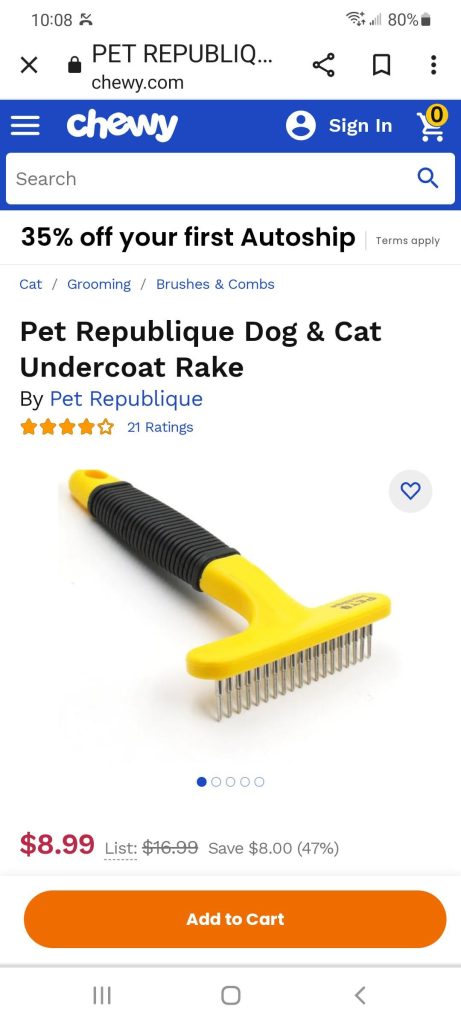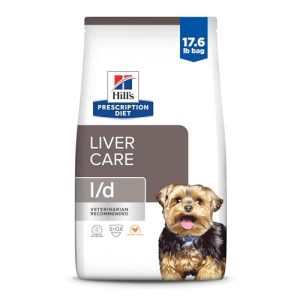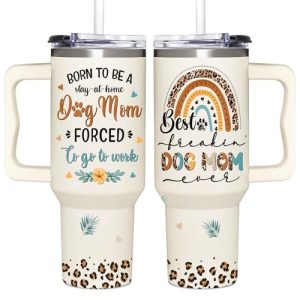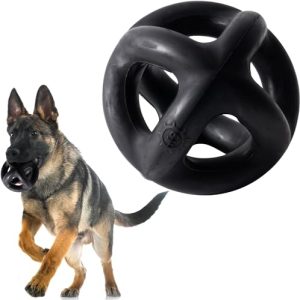If you want your dog to stay healthy, happy, and looking great, brushing is a must. But how often should you brush your dog?
Brushing too little can lead to mats and skin problems, while brushing too much might irritate their skin. Finding the right balance is easier than you think. Keep reading, and you’ll discover simple tips to keep your dog’s coat shiny and comfortable—without the guesswork.
Your furry friend will thank you!
The Importance Of Regular Brushing
Regular brushing is more than just a grooming task; it’s a vital part of your dog’s health routine. Brushing your dog consistently helps maintain their coat’s shine and prevents painful mats and tangles. It also gives you a chance to check their skin for any unusual bumps, parasites, or irritations that might need attention.
The Role Of Brushing In Skin And Coat Health
Brushing distributes natural oils across your dog’s coat, keeping it moisturized and healthy. Without this, your dog’s fur can become dry, dull, and prone to breakage. You might notice your dog scratching more often if their skin becomes irritated or flaky from lack of brushing.
Have you ever felt how much softer your dog’s coat is after a good brush? That’s the oil working its magic. Regular brushing helps keep your dog comfortable and looking their best every day.
Preventing Mats And Tangles
Mats and tangles don’t just look messy—they can cause discomfort and skin problems. When fur gets tangled, it can pull on the skin, creating sores or infections. For dogs with longer or thicker coats, mats can form quickly if brushing is skipped.
Brushing regularly breaks up these knots before they become a problem. You’ll save your dog from pain and yourself from costly grooming bills. How much time do you spend untangling your dog’s fur? Imagine cutting that down significantly!
Early Detection Of Health Issues
While brushing, you’re in the perfect position to spot signs of health problems early. You might find ticks, fleas, or unusual lumps that otherwise go unnoticed. Catching these early can make a huge difference in treatment success.
Think of brushing as a mini health check you do regularly. It’s a simple way to stay connected with your dog’s wellbeing and respond quickly to any changes you see.
Strengthening Your Bond
Brushing isn’t just practical; it’s a bonding experience. Many dogs enjoy the gentle attention, and it gives you quiet time together. This can reduce stress for both of you and build trust.
Have you noticed how your dog relaxes during brushing? That calm moment can turn a routine task into quality time, deepening your relationship in small but meaningful ways.
Factors Influencing Brushing Frequency
Brushing your dog is not a one-size-fits-all task. Several factors decide how often it should happen. Understanding these helps keep your dog’s coat healthy and clean. The right brushing frequency stops mats and removes dirt effectively.
These factors affect how often you need to brush your dog:
Breed And Coat Type
Dogs have different coats. Some have short hair, others long or curly. Long-haired breeds need daily brushing to avoid tangles. Short-haired dogs can be brushed once or twice a week. Double-coated dogs shed more and need regular brushing to remove loose fur.
Coat texture also matters. Coarse or wiry coats require different care than soft, silky hair. Tailor brushing tools and schedules to your dog’s specific coat type.
Age And Health Of The Dog
Puppies usually need gentle brushing to get used to the routine. Older dogs may have sensitive skin or health issues. These conditions can affect brushing frequency and technique. Dogs with skin allergies or wounds may need less frequent or special brushing to avoid irritation.
Healthy adult dogs benefit from regular brushing to keep their skin and coat in good condition.
Outdoor Activity Level
Dogs that spend a lot of time outside get dirtier faster. They collect more debris, mud, and loose hair. These dogs need more frequent brushing to stay clean and comfortable. Indoor dogs often stay cleaner and require less frequent brushing.
Active dogs may also develop tangles or mats faster, needing more attention to grooming.
Recommended Brushing Schedule
Brushing your dog regularly keeps their coat clean and healthy. It removes dirt, loose hair, and prevents mats. The right brushing schedule depends on your dog’s coat length. Each type needs different care to stay shiny and smooth.
Short-haired Breeds
Short-haired dogs need brushing once a week. Use a soft-bristle brush or grooming mitt. This helps remove loose fur and spreads natural oils. It also reduces shedding and keeps skin healthy.
Medium-haired Breeds
Medium-haired dogs require brushing two to three times a week. A slicker brush or a comb works well. This stops tangles and mats from forming. Regular brushing keeps their coat soft and shiny.
Long-haired Breeds
Long-haired dogs need daily brushing. Use a wide-tooth comb and a slicker brush. Daily care prevents mats and tangles that cause discomfort. This also keeps their coat clean and free of debris.
Tools For Effective Brushing
Brushing your dog regularly isn’t just about keeping them clean; it’s about using the right tools that make the process smooth and enjoyable for both of you. Having the proper equipment can reduce brushing time and prevent discomfort for your furry friend. Let’s look at some essential tools that help you brush effectively and keep your dog’s coat healthy.
Types Of Brushes
Different dog breeds and coat types need different brushes. Choosing the right one can make brushing easier and more effective.
- Slicker Brushes:Great for removing mats and tangles, especially in long-haired dogs. They have fine, short wires close together, perfect for delicate grooming.
- Bristle Brushes:Ideal for short-haired dogs. They help remove loose hair and dirt while giving your dog a gentle massage.
- Pin Brushes:Designed for medium to long coats, pin brushes help detangle and smooth the fur without pulling.
- Undercoat Rakes:These work well for dogs with thick undercoats. They reach deep to remove dead fur and reduce shedding significantly.
Have you noticed how your dog reacts differently to various brushes? Finding the right type can turn brushing from a chore into a bonding moment.
Grooming Accessories
Brushes alone don’t complete the grooming toolkit. Accessories can enhance the experience and help maintain your dog’s coat between brushings.
- Detangling Spray:Makes brushing easier by loosening knots and reducing hair breakage.
- Grooming Gloves:These let you brush and massage your dog simultaneously, perfect for sensitive or shy pups.
- Shedding Blades:Useful for dogs that shed heavily, these tools remove loose fur from the surface quickly.
- Scissors and Clippers:Handy for trimming mats or shaping fur after brushing sessions.
How often do you check your grooming tools for wear and tear? Keeping them in good condition ensures they work well and don’t hurt your dog.
Step-by-step Brushing Guide
Brushing your dog regularly is more than just a grooming routine—it’s a chance to bond and keep their coat healthy. Knowing how to brush effectively can make the process smoother for both you and your furry friend. Here’s a clear guide to help you get the best results every time you pick up that brush.
Preparing The Dog
Start by choosing a calm moment when your dog feels relaxed. You can sit on the floor or use a grooming table if you have one. This helps your dog feel more secure and less likely to squirm.
Speak softly and use treats to create a positive association with brushing. Before you begin, check your dog’s coat for any dirt or debris that might cause discomfort during brushing. Make sure you have the right brush for your dog’s coat type to avoid pulling or irritation.
Brushing Techniques
Use gentle, long strokes to follow the natural direction of your dog’s fur. Avoid brushing against the grain, which can be uncomfortable. Start at the head and work your way down to the tail, covering all areas including the belly and legs.
Pay close attention to sensitive spots like behind the ears and under the legs. If your dog enjoys it, try circular motions to stimulate the skin and improve blood flow. Keep an eye on your dog’s reactions—if they seem uncomfortable, adjust your pressure or technique.
Dealing With Tangles And Mats
Tangles can be tricky but don’t rush. Use a detangling spray or a bit of water to soften mats before brushing. Hold the fur close to the skin to avoid pulling and gently work through the knot with a comb or your fingers.
If a mat is too tight, don’t force it; consider trimming it carefully or asking a professional groomer for help. Regular brushing can prevent mats, but when they do appear, patience is key. How do you handle stubborn tangles with your dog?
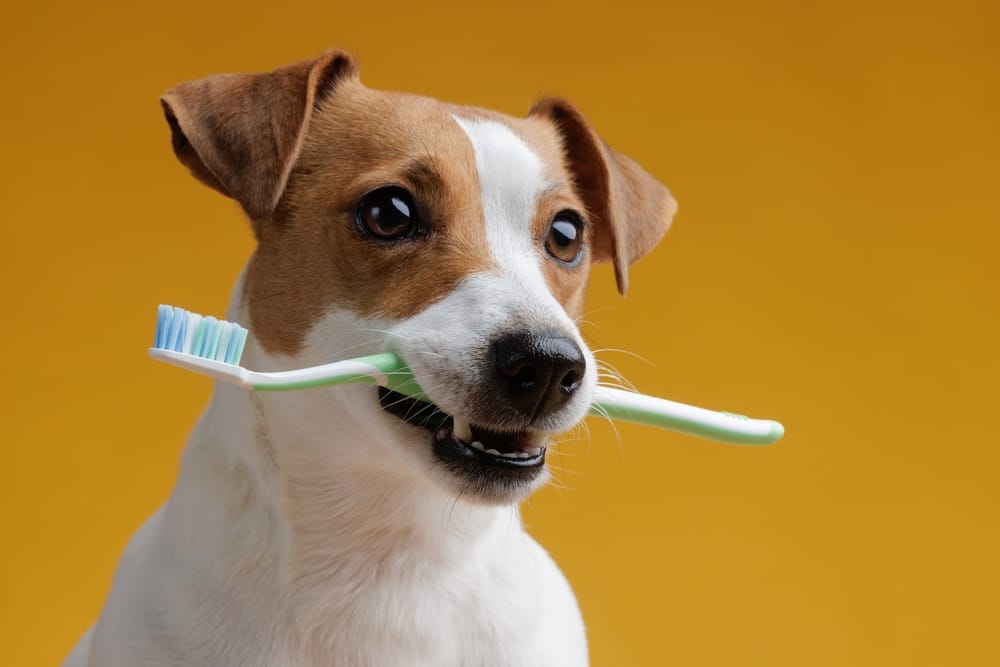
Credit: www.primpedpooches.com
Common Brushing Mistakes
Brushing your dog’s coat regularly is essential, but mistakes can reduce the benefits or even harm your furry friend. Many pet owners unknowingly make errors that affect their dog's skin and hair health. Understanding common brushing mistakes helps you avoid discomfort for your dog and keeps their coat looking its best.
Over-brushing
Brushing your dog too often can irritate their skin and strip away natural oils. These oils keep the coat shiny and protect the skin from dryness. If you notice redness or your dog trying to escape the brush, it might be time to cut back.
I once brushed my dog every day, thinking it would keep him clean. Instead, his skin became dry and flaky. Now, I brush him 2-3 times a week, which works well for his coat type.
Using The Wrong Tools
Using brushes that don’t match your dog’s coat type can cause discomfort or damage. For example, a slicker brush may be too harsh for short-haired breeds, while a bristle brush might not reach deep enough for thick fur.
Always choose tools designed for your dog’s specific coat. If unsure, ask your vet or groomer for recommendations. Have you checked if your brush suits your dog’s fur?
Benefits Of Regular Brushing
Regular brushing offers many benefits for your dog’s health and happiness. It keeps their coat clean and shiny. Brushing also helps spot skin problems early. This simple habit improves your dog’s comfort and appearance.
Improved Coat Health
Brushing removes dirt and dead hair from the coat. It spreads natural oils evenly across the fur. This makes the coat soft and shiny. A healthy coat protects your dog’s skin from dryness and irritation. Regular brushing reduces the chance of mats and tangles, which can cause pain.
Reduction In Shedding
Brushing catches loose hair before it falls off. This reduces hair around your home. It helps keep your furniture and clothes cleaner. Regular brushing controls shedding and keeps your dog comfortable. It also prevents hair from forming clumps on the floor.
Enhanced Bonding Time
Brushing is a quiet, gentle way to connect with your dog. It builds trust and shows care. Your dog feels relaxed and happy during brushing. This time together strengthens your relationship. It also helps your dog get used to being handled for vet visits or grooming.

Credit: www.hindustantimes.com
Signs Your Dog Needs More Brushing
Brushing your dog is more than just a grooming task. It keeps their coat healthy and skin clean. Dogs need regular brushing to remove dirt and loose fur. Missing brushing sessions can cause visible signs. Spotting these signs helps you know when your dog needs more care.
Increased Shedding
Shedding is natural, but too much means less brushing. Loose hair gathers on furniture and clothes. Your dog might leave hair trails around the house. Brushing helps remove dead hair before it falls off. If shedding spikes suddenly, add extra brushing days.
Dull Coat Appearance
A healthy coat shines and feels smooth. A dull coat looks rough and lacks shine. Dirt, dead skin, and oils build up without brushing. Your dog’s fur may look lifeless or tangled. Regular brushing spreads natural oils, keeping fur bright and soft.
When To Seek Professional Grooming
Knowing when to seek professional grooming for your dog is crucial for their health and comfort. While regular brushing at home keeps your dog’s coat in good shape, certain situations demand expert care. Recognizing these signs early can save your pet from unnecessary pain and skin problems.
Severe Matting
Severe matting is more than just a tangled mess. It can pull tightly on your dog’s skin, causing discomfort and even restricting movement. If you notice thick, dense clumps that you can’t gently brush out, it’s time to visit a groomer.
Professional groomers have the right tools and experience to safely remove mats without hurting your dog. Trying to cut out mats yourself can lead to accidental cuts or skin damage. Have you ever struggled with stubborn mats that just wouldn’t come out? That’s a clear sign to let a pro handle it.
Skin Conditions
Skin conditions like rashes, hot spots, or excessive dryness need careful attention. Brushing over irritated skin can worsen the problem or cause pain. If your dog’s skin looks red, flaky, or has bald patches, a groomer can help identify the issue and groom carefully around sensitive areas.
Professionals often work closely with vets to manage skin problems during grooming. They know which products to use or avoid, ensuring your dog’s skin heals faster. Have you noticed your dog scratching more than usual? That might mean your pet needs expert grooming to prevent further irritation.

Credit: www.petfood.express
Frequently Asked Questions
How Often Should I Brush My Dog’s Coat?
Brush your dog’s coat at least once a week. Frequent brushing removes dirt, loose hair, and prevents matting. Dogs with longer hair may need brushing every day or every other day for best coat health.
Can I Overbrush My Dog’s Fur?
Yes, overbrushing can irritate your dog’s skin. Brush gently and avoid excessive brushing to prevent redness or hair damage. Follow a regular schedule suited to your dog’s coat type.
What Are The Benefits Of Regular Dog Brushing?
Regular brushing promotes healthy skin, removes loose fur, and reduces shedding. It also helps detect skin issues early and strengthens the bond between you and your dog.
Should Puppies Be Brushed Differently Than Adult Dogs?
Puppies have more sensitive skin and thinner coats. Use softer brushes and brush gently a few times a week. Gradually increase frequency as the puppy grows to establish good grooming habits.
Conclusion
Brushing your dog regularly keeps their coat healthy and clean. Most dogs benefit from brushing two to three times a week. Dogs with long hair may need daily brushing to avoid mats. Short-haired dogs usually require less frequent care. Pay attention to your dog’s needs and coat type.
Consistent brushing also helps reduce shedding and skin problems. Make brushing a calm and positive time for your pet. Healthy fur means a happy dog. Keep brushing simple and regular for the best results. Your dog will thank you with a shiny, soft coat.

Emily Barker is the founder of ChillDogLife.com, a space dedicated to helping pup parents discover the best dog products, lifestyle tips, and cozy ideas for happier homes.
A lifelong dog lover, Emily combines her passion for pets with a knack for research to share trusted recommendations on everything from toys and furniture to health and everyday care.
Her goal is simple: to make life easier, stylish, and more joyful for dogs and the people who love them.
